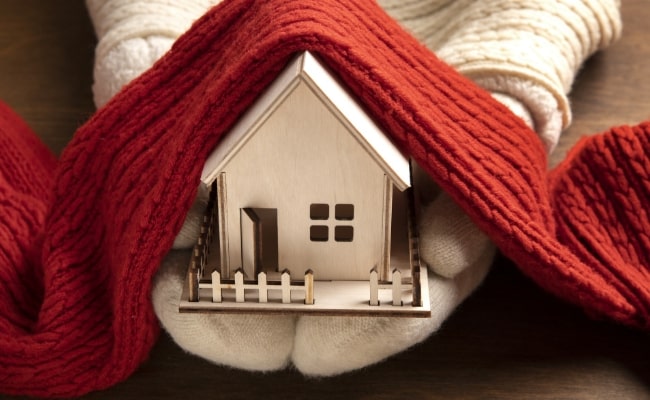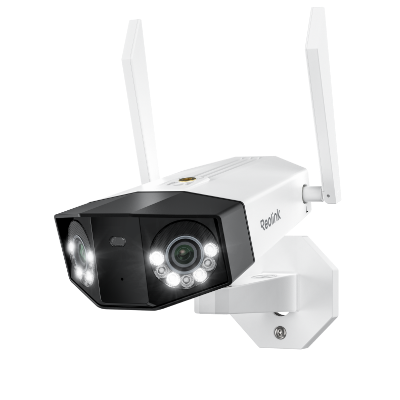How to Secure Your Home? 2025 Ultimate Guide

It makes sense to secure your home as it is a key to peace of mind and protecting your loved ones and belongings. Whether you opt for traditional or modern options, your smart devices should create a safe environment. This article contains practical measures to secure your home whether or not you have an alarm system.
How to Secure Your Home Without an Alarm?
Even if you don't spend money installing an alarm system, you can utilize a few basic, easy, and quite effective tips to prevent intruders and boost your home security.
Strengthen Doors
The first thing you need to do is to ensure your doors are strong enough as they are the main entry points for most homes.
Install deadbolts, as they are one of the most basic measures to strengthen your door. The purpose of a deadbolt is to make it harder for intruders to force entry and improve your security.
Add door reinforcement hardware like kick-resistant or prying-resistant doors. These can be strengthened with reinforcement plates and strike boxes.
Strengthen Windows
Most homes' secondary entry is their windows, which is often the easier option for most intruders. Hence, strengthening the windows is crucial for most homeowners, and below are a few tips you may follow:
If a protective film is applied to windows, they are easily immune to breaking or shattering.
Security bars prevent burglars even if they can break the glass because it will be too difficult even for them to access windows.
Sliding windows can be prevented from sliding open from the outside by using locks or dowels.
Deter tampering with a little reinforcement on the weak or old window locks.
Improve Lighting
Adequate lighting is a major deterrent for burglars. Get motion-activated lights around entry points to secure the entry of your home. Go for solar-powered options for energy efficiency.
Implement Visual Deterrents
Visible security measures can discourage potential intruders. Put up “Beware of Dog” signs even if you don’t have a dog. Fake security cameras or branded security stickers can also trick intruders into thinking twice about breaking in.
Landscape Strategically
Trim shrubs and keep low bushes around windows to make your house less of a hiding spot. Set up a fence around your property as the physical and psychological barrier for trespassers is a real fence.
Secure Entry Points
Try Garage door locks that are stronger. All secondary entrances (backdoors and basement doors) should be secured with these locks. Hence, giving you complete peace of mind whether you are in your home or not.
How to Secure Your Home with Smart Devices?
Advanced security tools are available in smart home technology, with remote monitoring and control being the new hot feature of smart home appliances.
Install Smart Door Locks
Keyless entry and monitoring who comes in or out of your home are some of the benefits you get with smart locks. Mobile apps exist for many models that allow you to remote lock and unlock. Smart locks eliminate the risk of access by lost or stolen keys, since they essentially work with no physical key.
Use Smart Security Cameras
Wi-Fi-enabled cameras will allow you to monitor your home in real-time. Choose from models with night vision, motion detection, and cloud storage of footage. These cameras deter intruders and serve as valuable evidence in the event of a break in. Reolink Duo 3 WiFi is a good choice.
Groundbreaking 16MP Dual-Lens WiFi Camera
16MP UHD, Dual-Lens, Motion Track, 180° Wide Viewing Angle, Plug-In WiFi, Color Night Vision.
Add a Doorbell Camera
With a doorbell camera, you can see and speak to visitors, even if you aren't there. It's particularly handy when it comes to monitoring deliveries. That keeps bad guys from stealing your packages knowing that they are being recorded and allows you to know who the surprise visitors are.
Install Smart Sensors
The window and door sensors warn you when any unauthorized opening occurs. You can also set motion sensors in places to alert you to strange activity apart from the entry points of your home.
Use Smart Alarms
Smart alarms can be incorporated with other devices and will notify you as soon as there's a breach by sending a text message to your smartphone immediately.
How to Secure Your Home When on Holiday?
When on vacations, you often leave your home vulnerable, although you can prevent much of this by taking some basic precautions.
Keep Your Travel Plans Private
Don't share travel details on social media to alert potential intruders that you, will not be there. You can share these updates after you have returned home.
Mark and Inventory Your Valuables
Mark your valuables with the ability to be recognized (engrave your valuables, use serial numbers, and get pictures), and maintain an inventory, including serial numbers and pictures. To get fully secure, put valuable things and important documents in a safe deposit box.
Make Your Home Look Occupied
Use smart lights to fake occupancy with programmed lighting schedules. Leaving curtains and blinds their usual place will make people think that you are there.
Schedule Lawn Maintenance and Arrange Mail Collection
The sight of an aggrieved unmown lawn, or overflowing mailbox is your cue that a property is unoccupied. Try to do it yourself before going or call someone to help — a neighbor or a service.
Secure Garage Doors
Turn off the automatic openers and use a manual lock while you're away. It lowers the chances of someone getting on your property when you are not there.
What to Look for When Using Smart Devices to Secure Your Home?
When choosing smart security devices, consider the following factors:
- Make sure the devices work within your current smart home experience with other devices, be they Google Assistant, Alexa, or perhaps something else.
- Look for devices with strong encryption (e.g., AES-256) to prevent unauthorized access to your data.
- Only battery backup devices are functional in case of power cuts. So, either get such battery-powered devices or manage a power backup for your whole home.
- Choose devices that offer remote access via apps or websites, allowing you to monitor and control your security systems from anywhere.
These are some of the basic checks you must consider when choosing smart devices for your home. However, there is no restriction on following your requirements. Everyone and their homes have different requirements. So, whenever you are investing in home security get something that is durable, reliable, and brings lasting value for your investment.
FAQs
1. What Houses Do Burglars Avoid?
Homes sporting cameras, alarms, motion motion-activated lights, are typically the ones burglars stay away from. Also, less likely to be targeted are homes with well-trimmed landscapes and surveillance activists in the neighborhood.
2. How Do You Completely Secure a House?
Security is comprehensive, a combination of physical enhancements to restrictions, including deadbolts and window locks, and today's technology including smart cameras and alarms. Long-term safety requires regular maintenance as well as situational awareness.
3. What is the Best Deterrent for Burglars?
Visible security cameras, well-lit exteriors, and barking dogs are the best deterrents. The combination with smart deadbolts, doorbell cameras, motion-activated lights, or just big dogs adds some extra layers of security. The best you can do is to implement as many security measures as available and you will get all the peace of mind you need for your home's security.
Conclusion
Securing your home is a two-fold process between traditional methods and smart technology. The strategies included in this guide range from reinforcing doors and windows to using smart locks and cameras, all tailored to different needs and budgets.
Whether you’re at home or away, taking steps to put yourself and your property in a position of safety beforehand is a good idea.
Search
Subscribe for the Latest Updates
Security insights & offers right into your inbox

